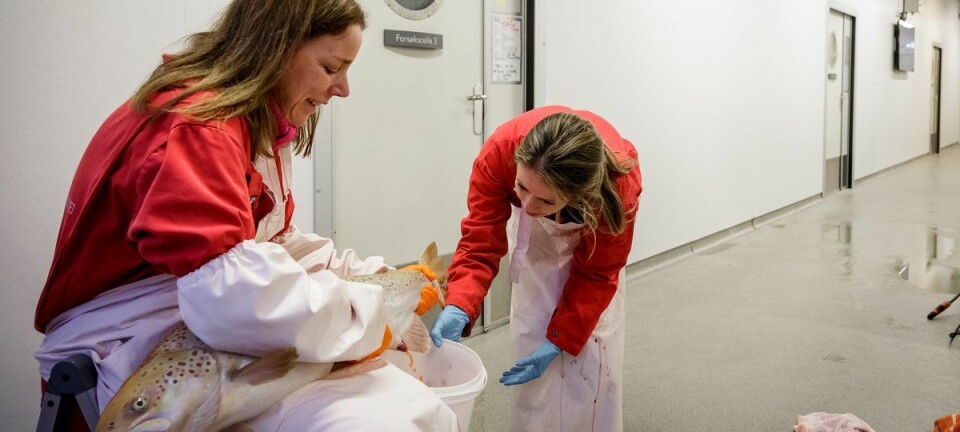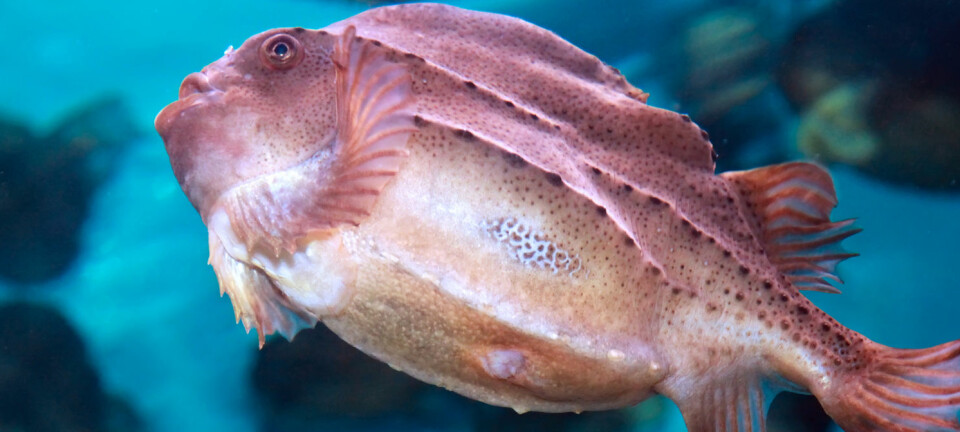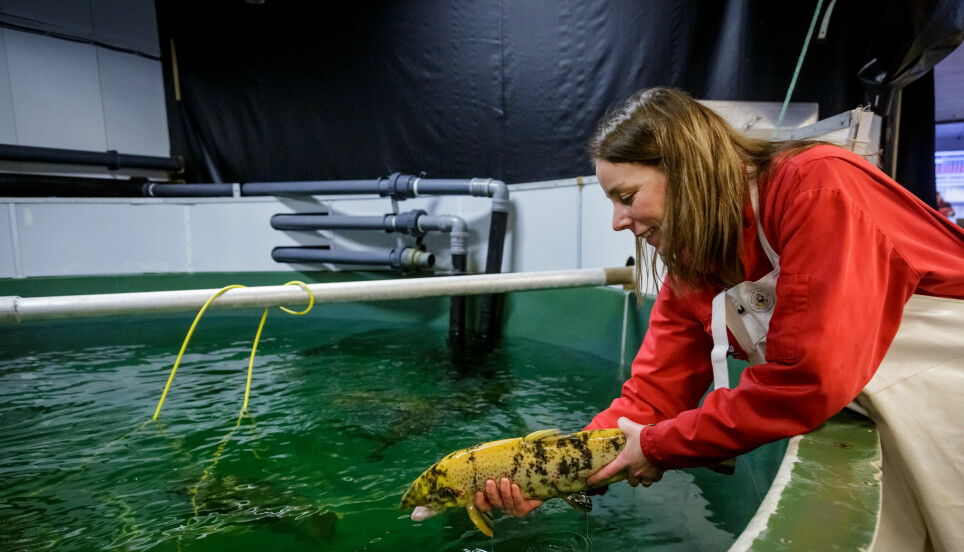
Controversial CRISPR-method used to make farmed salmon sterile
Gene editing using CRISPR is much debated globally but used in several projects in Norway. “This is not a single method”, says researcher Dorothy Dankel, comparing its diversity to surgery.
Last December, Emmanuelle Charpentier and Jennifer Doudna were rewarded the Nobel Prize in chemistry for the development of the genome editing method popularly known as CRISPR. The method is derived from bacteria. It involves sending targeted chemical scissors into cells to make changes: removing or inserting pieces of DNA.
Apply this to gametes (sex cells) or to a recently fertilized egg, and you can change the characteristics of the resulting being – animals can be made sterile, plants immune to fungal infestation, people can be rid of genetic defects. «There is enormous power in this genetic tool, which affects us all», said Claes Gustafsson, chair of the Nobel Committee for Chemistry, in a statement. This is no exaggeration.
When Charpentier’s group published a scientific article describing the final piece in the CRISPR-puzzle in 2011, it was not long before restrictions were proposed. A so-called moratorium – a complete halt – was proposed for research on hereditary changes in humans. The method has the potential to change species for good, ours included. But while the debate continued, so did the research on plants and animals.
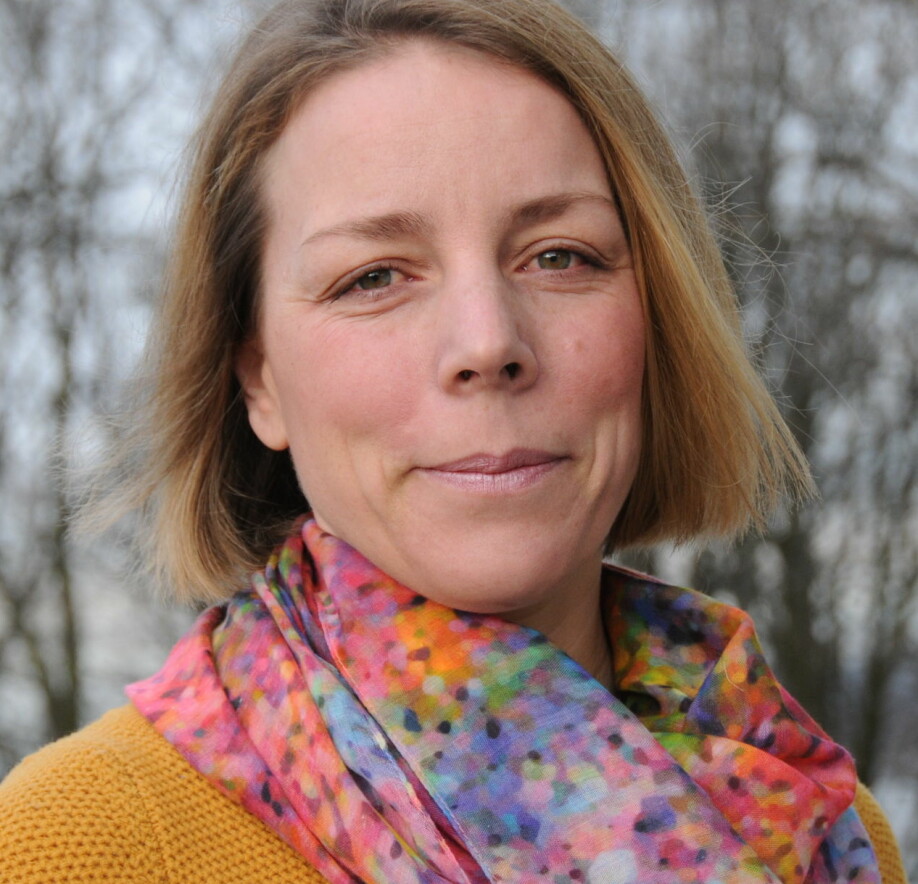
Dedicated ethics expert
The Institute of Marine Reseach (HI) in Norway has been using CRISPR since 2013. The goal of the first project was to develop sterile farmed salmon.
“We were going to use a different method, but our partners at the Max Planck Institute in Germany recommended CRISPR, and we ended up switching. Today, I think we have six CRISPR-Cas9 projects”, says research leader Anna Wargelius.
HI’s project was supported financially by the Research Council of Norway who required adherence to principles for responsible research and innovation (RRI). This is why Dorothy Dankel, who is a researcher at the University of Bergen has been a collaborative partner in the project. Dankel has a background in both fisheries biology and sciences and the humanities. Her role has been to highlight the big questions.
“We work day to day with our small results. This collaboration allows us to see the bigger picture: What is good and bad, how will people react to the results?” Says Wargelius.
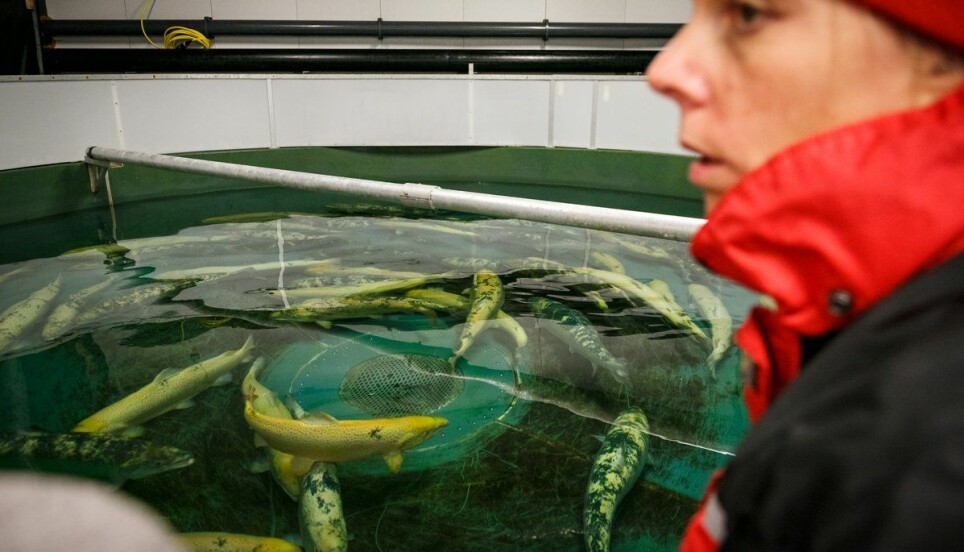

Food for thought
Dankel explains the need for extra ethical knowledge “inside the lab”.
She uses a story illustrate it.
“One night I met Anna on the tram, she came from the research station where they keep the CRISPR-salmon. ‘The fish are so big now’, she said, ‘that we killed some and checked that they are sterile. And then we ate them.’ ‘What, you can’t eat them?’, I replied. Anna said: ‘We cannot throw them out and they tasted good. The only person who did not eat it, was a pregnant woman.’ Anna gazed out the window and said: ‘I know it is safe to eat the fish’”.
Dankel continues:
“To me, this example shows how Anna wears two hats, one as a logical scientist, one as responsible for her employees. We talked about this incidence for the rest of the trip. We would have never had this conversation, had it not been for the basic openness and trust that comes with me being part of the project. This shows how important it is to debate ethical issues as they arise, even in the lab”.

More effective evolution
So, what kind of risks are we really dealing with here?
«I am most worried that people will think of CRISPR as regular GMO (genetically modified organisms) and reject it. In that case, we have not moved the debate forward since the 1990’s. CRISPR is a simple method, yet very complex. It is like sugery: Is surgery good and effective? That depends on what you operate, how and on who” says Dankel.

CRISPR can be used to insert genetical material from one species to another, a controversial practice. One concern has been the spread of transferred genes to new species in the wild. But CRISPR can also be used to make rather small changes within one species’ DNA. You can turn on or off parts of a gene needed to produce gametes, leaving salmon sterile, for instance. Such changes are similar to those traditionally achieved through breeding.
«Two years of work with CRISPR can bring about genetic changes that would naturally take 10 000 years of normal evolutionary development of a mutation” suggests Dankel.
The well-being of the salmon
So, what can be gained? In time, Wargelius hopes the CRISPR-salmon can eliminate the problem of farmed salmon mixing with wild salmon genetically. This would solve a major headache for the industry but also safeguard biological diversity. The research group also has the well-being of the salmon in mind, a requirement also stressed in research ethical guidelines.
«We have not seen any adverse effects in the genes of our salmon. They show good growth, good well-being, and good quality. We now wish to examine whether the genetic change also changes the salmon’s behavior”, says Wargelius.
To rule out completely any changes to the other 55 000 genes of the CRISPR-salmon, HI is planning to examine all its DNA.
“I think it is necessary, just to show we are on the safe side, and it does not cost a lot”, says Wargelius.
De-licing with CRISPR
On the other side of the world, in Australia, researcher Nicholas Robinson is planning a different project using CRISPR on salmon: To improve farmed Atlantic salmon using genetic information from Pacific salmon. Some species of Pacific salmon are much more resistant to salmon lice, a parasite that costs the industry more than five billion Norwegian kroner per year, and that also plagues the salmon. By studying the Pacific salmon, the researchers hope to learn what genes in the Atlantic salmon could be modified or turned off to improve lice resistance.
«The lice create open wounds in the skin, causing inflammation and stress, sometimes death. Lice treatments also cause stress to the fish. The project is concerned with improving the welfare of Atlantic salmon, and of course, the economics of salmon farming. It will also improve the well-being of neighboring wild salmon since the lice population is reduced” Robinson explains.
He is as Senior Research Scienticst at Nofima, a Norwegian institute for applied research within fisheries, aquaculture and food.
In this project, un-edited fish will be grown in parallel with the CRISPR-fish and used as a comparison.
“Any differences between the edited fish and controls will be noted and if we see any signs that animals are under stress, the experiment will be stopped.”
The researchers do not have any expectations about whether or what type of side effects might occur.
“We consider that the risk of side effects from use of CRISPR-Cas9 will be low. Nevertheless, we suggest that a cautious approach should be taken, and that thorough testing should occur.”
The research group has yet to decide what genes to change. Depending on the genes that are edited, and their biological function, there may be some specific traits that need to be given special consideration.
“In any case, traits related to growth, reproduction, development, flesh quality and welfare should be studied” says Robinson.
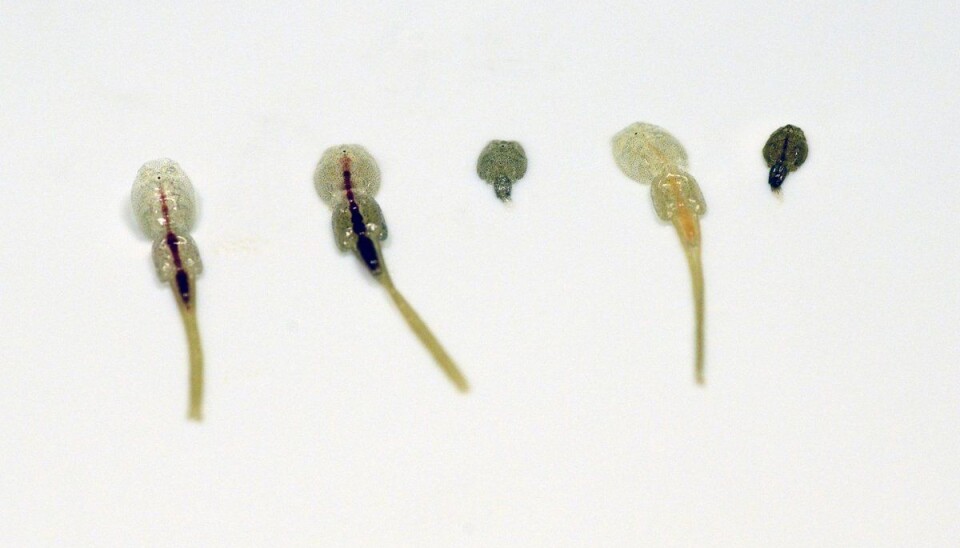
A political question
Researchers must always consider potential consequences of the use of their research. However, whether Norwegian “CRISPR-animals” or “CRISPR-plants” will be mass produced, is a political question. The field is regulated by the gene technology act. It states that release of genetically modified organisms can only be approved when there is no risk of damage to environment or health. According to the act, societal benefits and sustainability should also be considered.
So far, Norwegian authorities have declined genetically modified rapeseeds, among other things, as they fear their genes could spread to other species in the wild. The statement claims that such genetic flow could impair biological diversity. A genetically modified maize was denied for ethical reasons: This maize was going to be grown in another country using a pesticide that is banned in Norway for its damaging effect on health and environment.
Carnation with a changed color is the only thing that has been approved so far. In other countries, genetically modified organisms are a part of everyday life. In the USA, CRISPR-yoghurt is the rule rather than the exception.
In Norway, researchers are using CRISPR on strawberries, lettuce, and garden plants, among other things. Research on animals must be approved by the Norwegian Food Safety Authority. According to their advisor, Dag Atle Tuft, there is no simple way to get an overview of approved CRISPR-projects from their systems, but he estimates that there are fewer than ten.
«Since the method seems to work so well, I have actually expected it to take off a bit. That is my personal opinion, though», says Tuft.
Are there special aspects to consider then, in these types of applications?
“The same principles apply: Can the research be conducted without animals? Has reducing the number of animals been considered, and could better methods enhance animal well-being? In risk of injury to animals, handling this with so-called humane end points must be planned for. In general, I do not think researchers are interested in animal cruelty. My opinion is that they want to do the research as best as possible, to make sure the results are as representative as possible”, says Tuft.
Fears brain drain
According to Dankel, Norway needs a broad debate concerning a relaxation of the regulations.
“If Norway does not allow CRISPR-products, Norwegian actors might take their projects elsewhere. This could lead to a brain drain. What is the gain to Norway then?” she asks.
«Behind this lies an ideology that is against genetic modification. At the same time, we have an ideological discussion about what to live on in the post-oil era. In biotechnology, we have begun to build up a competence that could become important.”
She hopes for a discussion on prime time TV, The Debate on the Norwegian public broadcaster NRK.
“We must have a broad debate about this, I dream that it will be a topic in the TV-show The Debate. It concerns everyone.”
———
This article was first published in Norwegian in the magazine Research Ethics.
RELATED:







